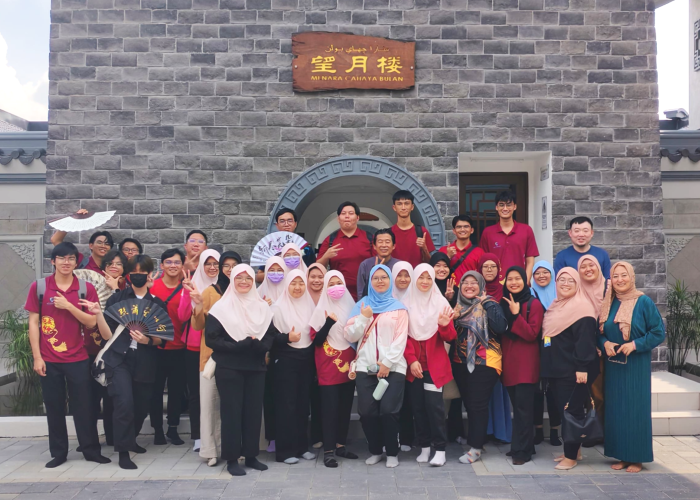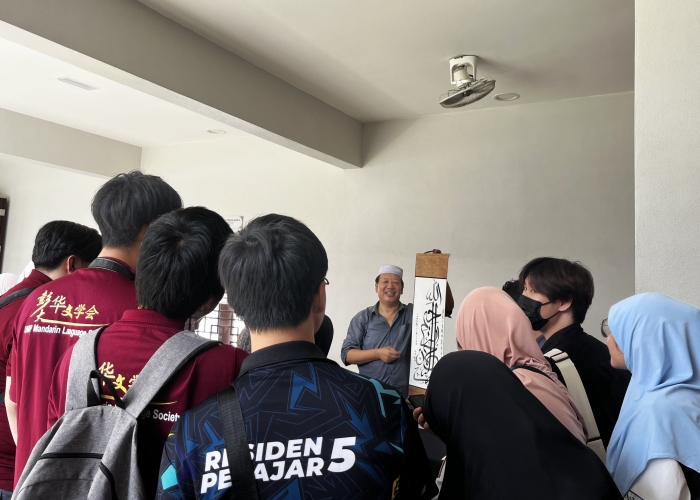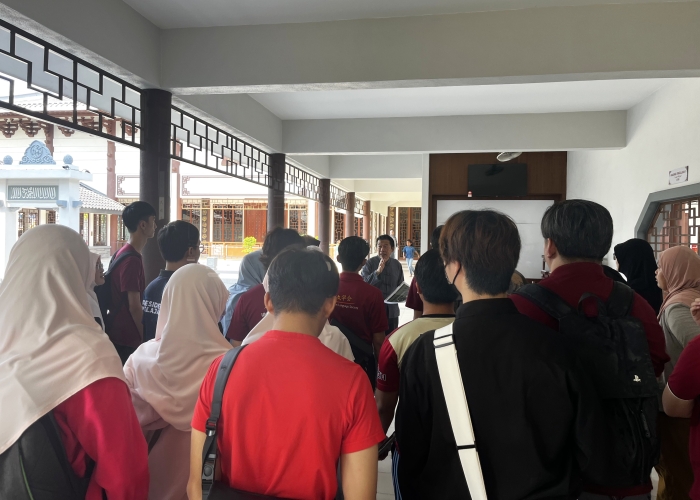A JOURNEY THROUGH LANGUAGE, FAITH AND HERITAGE: VISITING KLANG'S CHINESE MUSLIM MOSQUE
KLANG, 28 December 2024 – The Chinese Language Society has successfully organised a learning trip to Klang accompanied by the Centre for Modern Languages, CML Mandarin language teachers, Lee Cheng May. The goal of this event was to strengthen the connection between society members from Gambang and Pekan campuses, while also promoting intercultural exchange. A special part of the trip included a visit to the newly built Chinese Mosque in Klang, which was completed in July 2024. This visit aimed to give students a chance to understand the differences between Chinese mosques and traditional Malay mosques, as well as offer non-Muslim students a deeper insight into Islamic culture.
Background of Chinese Mosques
Chinese mosques in Malaysia are unique buildings that combine Chinese culture with Islamic architecture. To date, there are five Chinese mosques in Malaysia:
- Masjid Jubli Perak Sultan Ismail Petra – built in 2005 in Kelantan.
- Masjid Muhammadiah – built in 2013 in Perak.
- Masjid Cina Negeri Melaka – built in 2014 in Melaka.
- Masjid Al-Khairiah – built in 2020 on Pangkor Island.
- Masjid Jamek Cini Muslim Klang – completed in July 2024, it is the first Chinese mosque in Selangor.
Significance of the Activity
The visit to the Chinese Mosque had profound educational value. For non-Muslim students, this was an opportunity to better understand Islamic culture and challenge any misconceptions they may have had about Islam. For Muslim students, it was a unique experience, as the mosque they are familiar with incorporated Chinese cultural elements, such as traditional Chinese roof beams, tiles, and ancient-style corridors, which made it distinctly different from the mosques they usually visit.
Architectural Features and Cultural Fusion
The design of the Klang Chinese Mosque was inspired by the mosque in Xi'an, China. However, due to space limitations, the architect divided the originally rectangular building into two parts, in an attempt to retain the traditional Chinese mosque style. This design not only showcases the architect’s creativity but also reflects the harmonious coexistence of Chinese and Islamic cultures.
Construction Background
The Selangor Religious Affairs Department proposed the idea of building a mosque, and the Sultan of Selangor, DYMM Sultan Sharafuddin Idris Shah Alhaj Ibni Almarhum Sultan Salahuddin Abdul Aziz Shah Alhaj, has provided two conditions: Firstly, the mosque should be established in a multi-ethnicity location. Secondly, the mosque should incorporate elements of Chinese culture. These conditions led to the creation of the Klang Chinese Mosque, making it the first mosque in Selangor to integrate Chinese cultural elements.
Student Feedback
- Muslim Students: Many Muslim students mentioned that the appearance of the mosque was very different from traditional mosques. Without guidance, they might have hesitated to enter, as it resembled more of a Chinese temple than a mosque.
- Non-Muslim Students: Through this visit, non-Muslim students were able to break through their stereotypes of Islamic culture. They realized that converting to Islam does not mean abandoning Chinese culture or changing one’s name.
Future Outlook
This visit provided us with a basic understanding of the background behind the creation of Chinese mosques. In the future, we hope to explore further the exchange and integration of Chinese and Islamic cultures, with the aim of promoting greater cultural understanding and religious harmony.
Conclusion
The day trip to Klang was more than just a simple outdoor activity; it was a cultural exploration and a spiritual experience. Through this event, students not only deepened their understanding of one another but also gained a greater appreciation and respect for multiculturalism. We look forward to organizing more such events in the future to continue fostering cultural exchange and mutual understanding.
Written by: Dr. Wan Jumani binti Fauzi & Ms. Lee Cheng May



